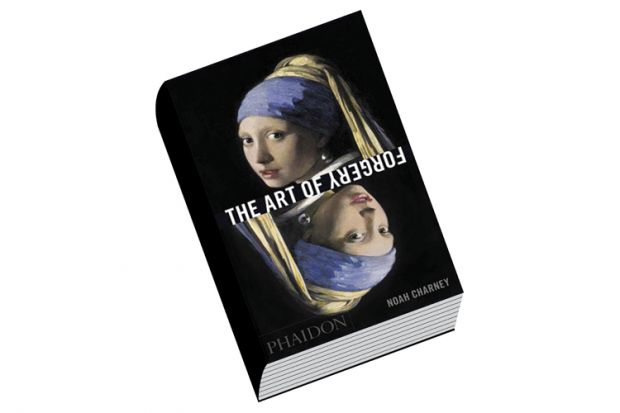There is something disgracefully delicious about art forgery. It is just the sort of creative wickedness that the public (if not its victims) seem to enjoy: noses are thumbed at the so-called experts and the forger emerges as an art historical highwayman, delivering dash, intrigue and delight.
Even museums are getting in on the act. This year, the Dulwich Picture Gallery staged an exhibition in which visitors were invited to “spot the fake” among the 270 genuine works on show. Attendance quadrupled.
Noah Charney’s entertaining book taps perfectly into the popular fascination with forgery – and especially with the forger himself (yes, they are nearly all men). Rather than seeking to reveal new details or indeed expose new fakes, this helpfully illustrated volume explores the mindsets and the motivations of the forgers whose works have so far been exposed. What Charney wants to know is not just how, but why, they did it. Curiously, money is rarely the primary motivating factor.
According to the author, the things that motivate the forger are genius, pride, revenge, fame, crime, opportunism, money and power. Charney is a natural storyteller, and although his expository style is much more Start the Week than The Burlington Magazine, that is not exclusively a bad thing. Beneath his apparent lightness of touch, he asks intelligent questions, melding theory with illustrative anecdote along the way.
The majority of the forgers he discusses are already well known to art historians: Han van Meegeren, who specialised in Vermeer and fooled the Nazis; the “loveable” Tom Keating, whose fakes were “meant to be discovered”; John Myatt and his “genuine fakes”; and Elmyr de Hory, who was celebrated in Orson Welles’ delightfully undependable 1975 documentary F for Fake. Many of these people, once exposed, revelled in and profited from their notoriety. Indeed, Lothar Malskat revealed himself as a forger and when he was not initially believed took the extraordinary step of suing himself for fraud.
Such characters and their escapades are decidedly media-friendly. The 21st-century forger Wolfgang Beltracchi, observes Charney, was seen in the art world as “one-part Christ, one-part Albrecht Dürer”. He cites an article in Der Spiegel that declared: “Compared with crooked bankers, Beltracchi and his co-conspirators haven’t swindled the common people out of their savings, but rather people who may have wanted to be deceived.”
This willingness to be fooled is a leitmotif for Charney. His introduction is subtitled “The world wishes to be deceived”, and his conclusion is “So let it be deceived”. And while he maintains that money is not usually the forger’s primum mobile, he also uses the Beltracchi case to argue that “the usual disincentives to crime do not apply to art forgery – indeed, one might ask whether there are sufficient reasons not to try one’s hand at the crime. In the field of art forgery, the benefits outweigh the risks, and by a mile.”
There is, of course, much more to the morality and consequences of art forgery than this. Soundbites apart, Charney’s book is at its best when it considers the greyer, more nuanced aspects of the crime – including the role played by certain parts of the art world itself. Not every dimension of forgery is such delightful fun.
Richard Howells is reader in culture, media and creative industries, King’s College London.
The Art of Forgery: The Minds, Motives and Methods of Master Forgers
By Noah Charney
Phaidon, 296pp, £19.95
ISBN 9780714867458
Published 18 May 2015
后记
Article originally published as: Let's play the imitation game (25 June 2015)
